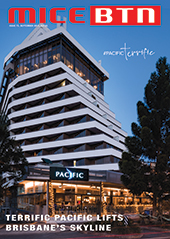Singapore Airlines faces ongoing challenges
- BTN News
- Thursday, 16 June 2016
The competitive landscape continues to be challenging for Singapore Airlines, though its most-recent air cargo results were positive.
Its system-wide passenger carriage for May 2016 (measured in revenue passenger kilometres) decreased 2.9 per cent against last year, with a 1.6 per cent reduction in capacity (measured in available seat kilometres). Consequently, passenger load factor (PLF) fell 0.9 percentage points to 72.7 per cent.
PLF did increase for the East Asia region, but declined for all other regions due to softer passenger demand.
Group results
The Group's SilkAir’s system-wide passenger carriage grew 16.7 per cent year-on-year, exceeding capacity growth of 15.1 per cent in May 2016. Consequently, PLF improved by 0.9 percentage points to 69.5 per cent. Growth in passenger carriage exceeded capacity expansion for both the East Asia and Pacific region and the West Asia region, resulting in a 1.3 percentage-point and 0.1 percentage-point increase in PLF respectively.
And another SIA sister carrier Scoot’s system-wide passenger carriage improved by 56.9 per cent year-on-year. Capacity increased by 60.1 per cent year-on-year in May 2016 as the number of aircraft increased from six to 11. Consequently, PLF dropped by 1.6 percentage points to 78.1 per cent. The eleventh B787 aircraft, which was delivered in April 2016, entered into service in May 2016.
Finally, Tiger Air’s system-wide passenger carriage remained flat year-on-year while capacity increased by 1.5 per cent. Consequently, PLF dropped by 1.1 percentage points to 81.9 per cent.
Cargo posts small gains
Overall cargo load factor (CLF) was 0.7 percentage points higher with growth in cargo traffic (measured in freight-tonne-kilometres) of 4.7 per cent exceeding overall capacity increase of 3.6 per cent. East Asia, Americas and Europe regions showed improvement in load factor with demand outpacing capacity changes.










